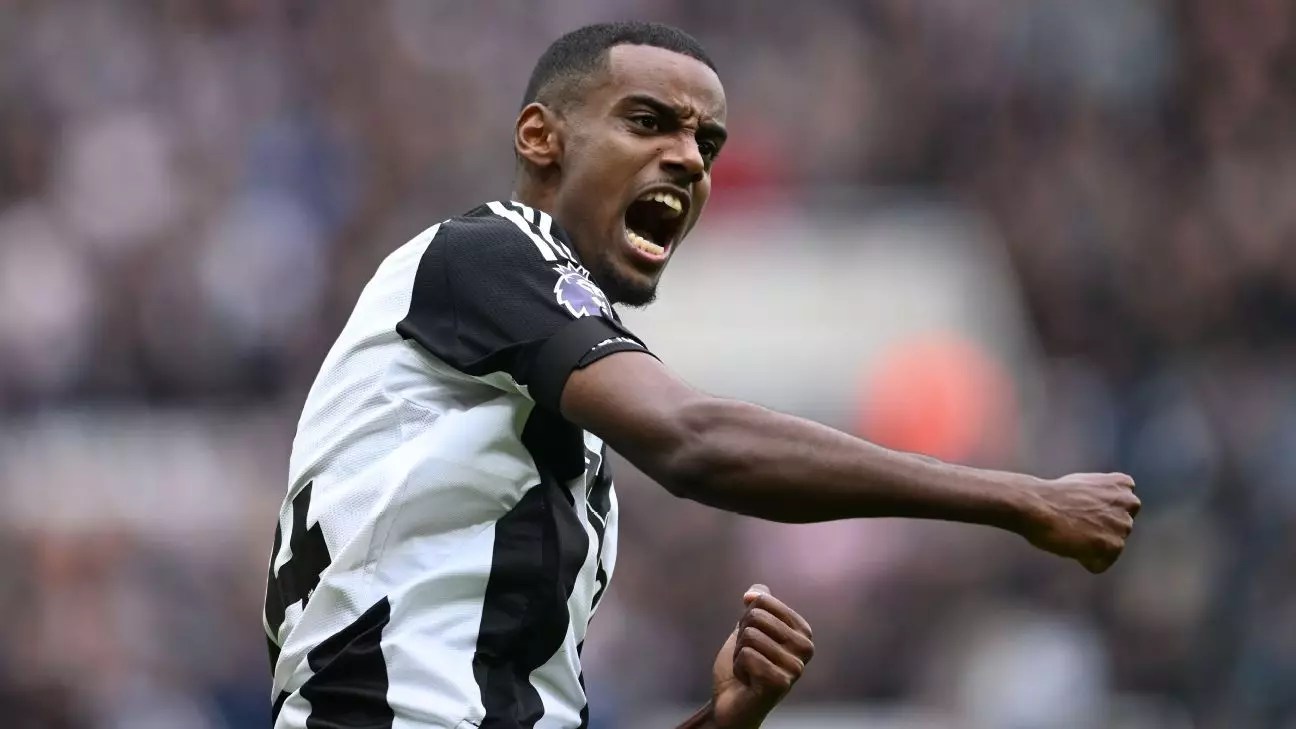In the ever-changing world of football transfers, the spotlight has recently fallen on Newcastle United striker Alexander Isak and Manchester United midfielder Kobbie Mainoo. Their growing reputations have caught the attention of some of the most prestigious clubs in Europe, reflecting a trend where emerging talents are being pursued aggressively in the transfer market.
Alexander Isak, 25, has been a revelation for Newcastle United, showcasing his goal-scoring prowess with a remarkable tally of seven goals in his last five outings, totaling ten in his last ten. This prolific form has not only cemented his place as a key player for the Magpies but also catapulted him to the top of Barcelona’s wish list. However, speculation about Barcelona’s ability to afford a significant transfer fee is rife, particularly given their ongoing struggles to manage their current roster and financial issues. The Catalan club’s need for a forward who can succeed Robert Lewandowski may drive them to pursue Isak, yet it raises questions about the feasibility of such a transfer, especially with Newcastle reportedly valuing their star at a staggering £100 million.
Meanwhile, the English Premier League sees a similar narrative unfold with Kobbie Mainoo. The 19-year-old midfielder has emerged as a target for Chelsea, creating a buzz given that he has been stalling on contract negotiations with Manchester United. His impressive potential makes him highly coveted, and reports suggest a valuation of around £60 million. Mainoo’s current deal runs until 2027, allowing Manchester United some leverage over his future, but the club may still face dilemmas under Premier League profit and sustainability rules, prompting them to consider offloading young talents like Mainoo or Alejandro Garnacho.
The dynamics in transfer pursuits reveal more than just individual player interest; they expose the strategic inclinations of major clubs. Chelsea’s pursuit of Mainoo, coupled with Manchester United’s intent to retain their homegrown talent, signifies a broader trend where clubs are revisiting their approach to squad management and youth development.
Simultaneously, Manchester United’s reluctance to part ways with Marcus Rashford has led to AC Milan emerging as a frontrunner for the English winger. The situation is further complicated by Barcelona’s financial restrictions, which hinder their capability to engage in high-stakes transfer negotiations. The competitive landscape is defined by clubs’ capabilities to maneuver within their financial frameworks while also satisfying the talent demands that arise as player performances fluctuate.
In this vein, the interest from AS Monaco in Rashford indicates that the race for top talent is not merely insular but reverberates across European leagues. The prospect of a loan deal highlights the ongoing strategy among clubs to mitigate financial risks while enhancing their squads, particularly in a landscape where player availability can change in a heartbeat.
Beyond just a couple of high-profile names, the transfer chatter thickens with numerous players on the move. The prospect of AC Milan’s Rafael Leão joining Barcelona has emerged, punctuating Barcelona’s ongoing deliberations over their squad composition. Similarly, curiosity surrounds Wolverhampton Wanderers midfielder João Gomes, who is under the radar of several top clubs, including Arsenal and Liverpool, signaling a burgeoning market for talented players from lesser-tier teams.
Clubs are increasingly willing to engage in loan dealings and conditional contracts as a method to navigate financial limitations. For instance, the loanees such as Michael Folorunsho from Napoli to Fiorentina underscore this evolving tactic aimed at maximizing squad depth without exorbitant outlays.
In contrast, Juventus appears poised to increase their offer for Ronald Araújo, revealing their strategy to bolster defensive solidity amidst fluctuating market conditions that can dictate player values beyond expected rates. This aspect widens the discussion, as the interdependence of clubs – each with unique financial challenges – demands astute negotiations devoid of impulsivity.
The ripple effect of these transfers reaches beyond the English Premier League and into other leagues, reflecting a global landscape teeming with activities. Interest from various clubs across Europe and initiatives by teams like Borussia Dortmund and Inter Milan to secure young prospects like Cardoso Varela and Francesco Pio Esposito reveals a concerted effort to harness youth talent as a pivotal aspect of club strategy.
These developments also hint at the growing engagement of MLS clubs, as they begin to feature more prominently in discussions of emerging talents. With clubs actively scouting players from North America—like Jovan Mijatovic and Chicho Arango—global scouting networks are evolving, focusing on untapped markets while compelling traditional European powerhouses to reassess talent acquisition frameworks.
As the January transfer window progresses, the landscape will continue to evolve, offering more twists and turns in the burgeoning saga of football transfers. Clubs not only seek to reinforce their lineups but also vie for strategic gains that could very well define their trajectories for seasons to come. The dance of negotiations, linked with fluctuating market values, now truly exemplifies the intricacies of football today.


Leave a Reply